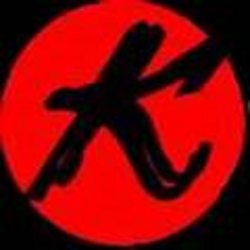A few words about Argentine tango
Argentine tango is danced in an embrace
that can vary from very open, in which
leader and follower connect at arms
length, to very closed, in which the
connection is chest-to-chest, or anywhere
in between.
Tango dance is essentially walking with a
partner and the music. Dancing
appropriately to the emotion and speed of
a tango is extremely important to dancing
tango. A good dancer is one who
transmits a feeling of the music to the
partner, leading them effectively
throughout the dance. Also, dancers
generally keep their feet close to the floor
as they walk, the ankles and knees
brushing as one leg passes the other.
Argentine tango dancing relies heavily on
improvisation; although certain patterns of
movement have been codified by
instructors over the years as a device to
instruct dancers, there is no “basic step.”
One of the few constants across all
Argentine tango dance styles is that the
follower will usually be led to alternate feet.
Another is that the follower rarely has his
or her weight on both feet at the same
time. In many modern variations of
Argentine Tango, particularly in Europe,
teachers of Tango may establish a “basic
step” in order to help students to learn and
pick up the “feel” of the dance
the Tango Investigation Group (later
transformed into the Cosmotango
organization) founded by Gustavo
Naveira and Fabian Salas applied the
principles of dance kinesiology from
modern dance to analyze the physics of
movement in Argentine tango.
Taking what they learned from this
analysis they then began to explore all the
possibilities of movement within the
framework of Argentine Tango. From the
work of these founders of the Tango
Nuevo movement, there was shift in all
styles of tango away from teaching what
to dance toward teaching how to dance.
Though widely referred to as a tango
style outside of Argentina, Tango Nuevo
is not considered a style of dancing
tango by the founders of the movement. It
refers only to the method of analysis and
teaching developed through the
application of the principles of dance
kinesiology to Argentine Tango.
In 2009, Gustavo Naveira published an
essay New Tango in which he states,
“There is great confusion on the question
of the way of dancing the tango: call it
technique, form, or style. The term tango
nuevo, is used to refer to a style of
dancing, which is an error. In reality,
tango nuevo is everything that has
happened with the tango since the
1980s. It is not a question of a style…
The words tango nuevo express what is
happening with tango dancing in general;
namely that it is evolving.” Therefore, as
the Gustavo Naveira and other founders
of the Tango Nuevo movement have said,
all styles of tango, which have now been
influenced by the analysis of the dance,
are all Tango Nuevo.
Despite the insistence by the founders of
the Tango Nuevo movement that it is not
a single style, it has become an accepted
term by many that it is a separate and
distinct style of tango. Practitioners of
tango nuevo are Gustavo Naveira, Javier
Antar, Norberto “El Pulpo” Esbrés,
Fabián Salas, Sebastian Arce, Mariana
Montes, Mariano ‘Chicho’ Frumboli. All of
these dancers have highly individual
styles that cannot be confused with each
other, yet are all referred to by many as
the tango nuevo style.
